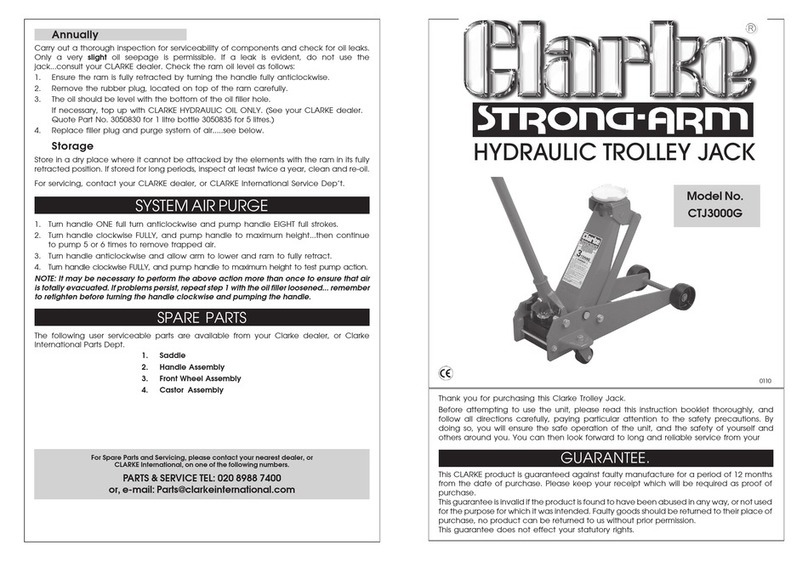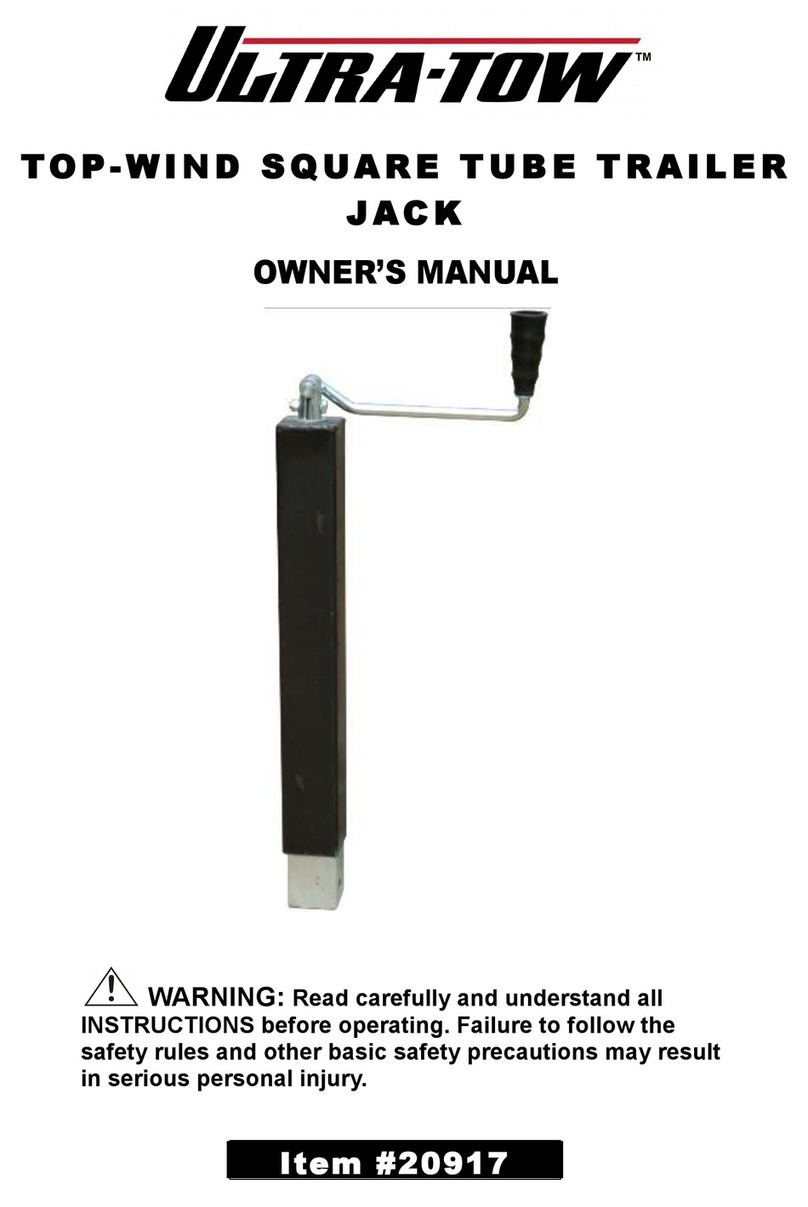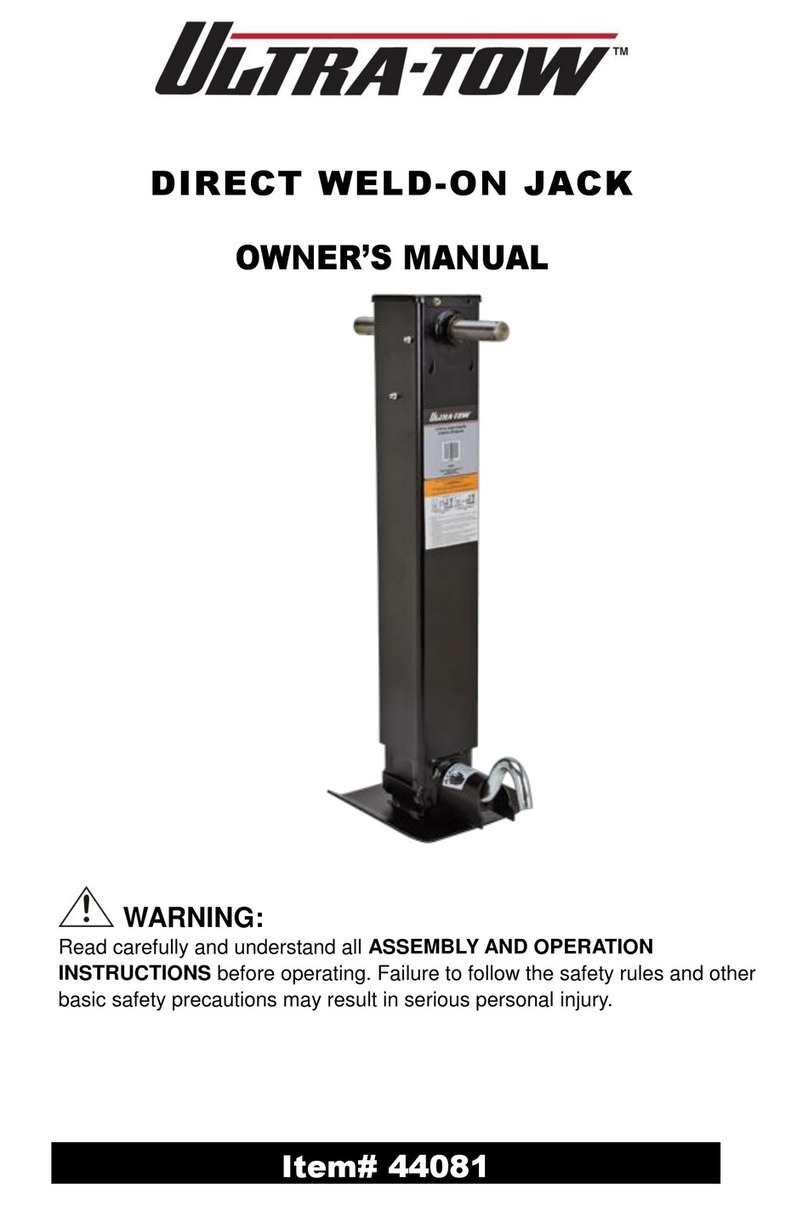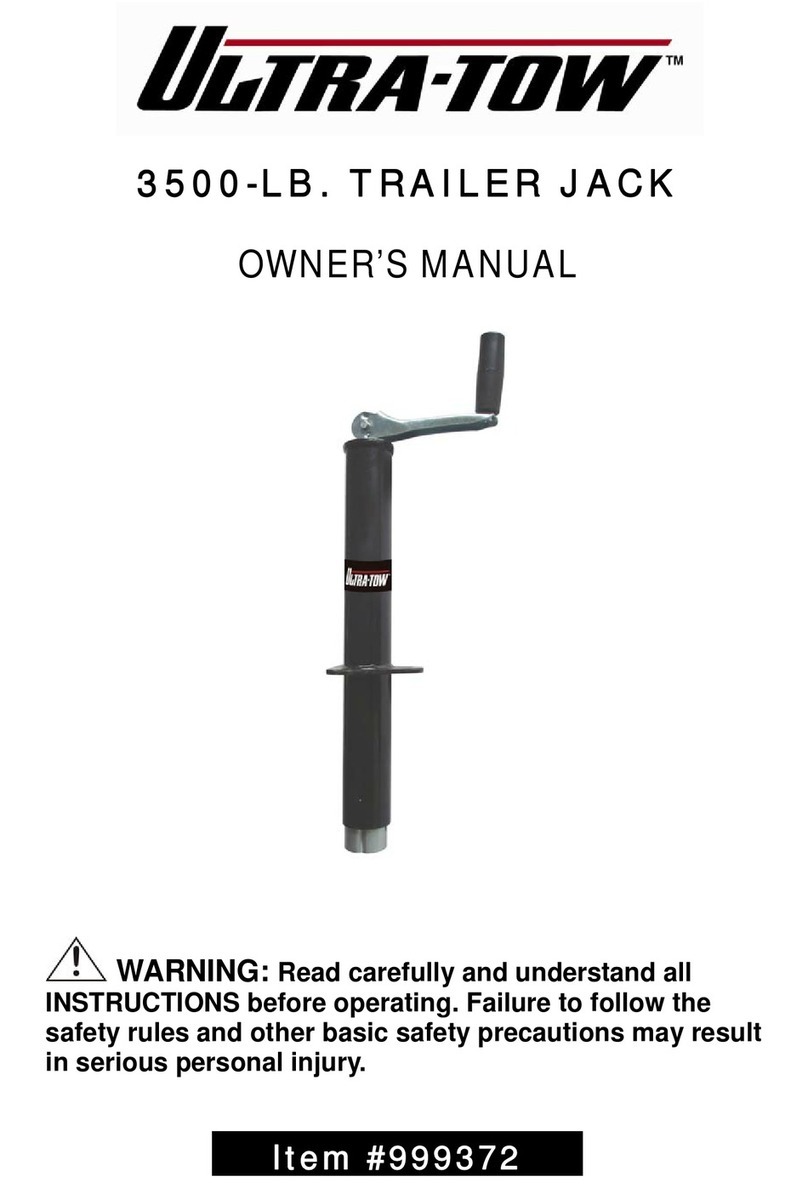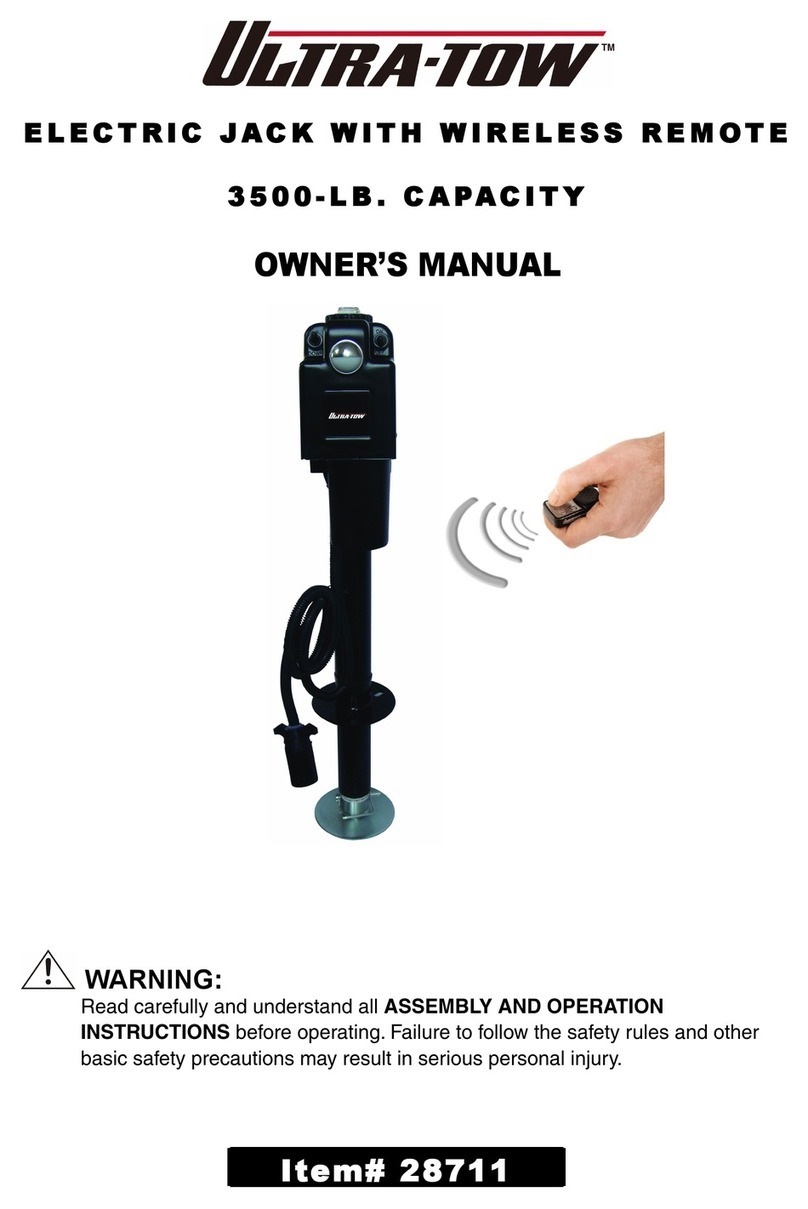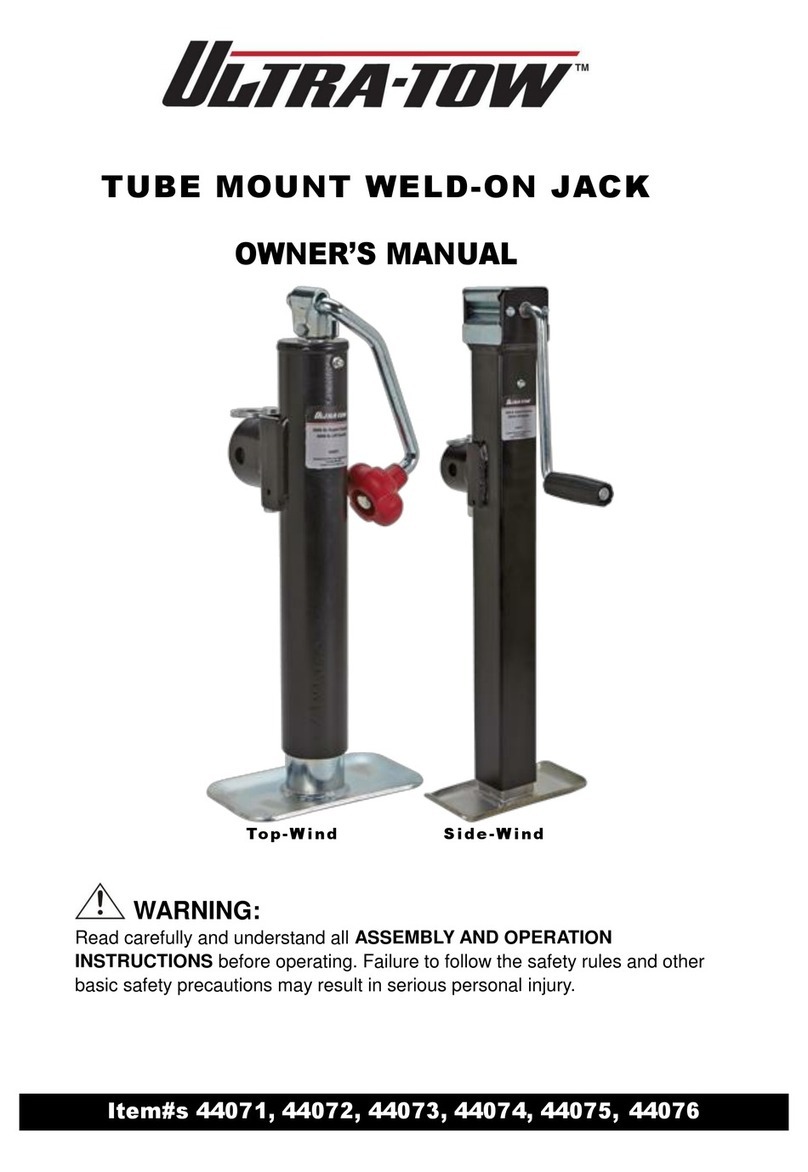·Be alert of your surroundings. Using a trailer jack in confined work areas may put you
dangerously close to cutting tools and rotating parts.
PERSONAL SAFETY
·Use personal protective equipment. Always wear eye protection. Safety equipment such as
dust mask, non-skid safety shoes, hard hat, or hearing protection used for appropriate
conditions will reduce personal injuries.
·Do not overreach. Keep proper footing and balance at all times. This enables better control
of the trailer jack in unexpected situations.
·Dress properly. Do not wear loose clothing or jewelry. Keep your hair, clothing and
gloves away from moving parts. Loose clothes, jewelry or long hair can be caught in moving
parts.
TOOL USE AND CARE
·Use on smooth, flat surfaces only.
·Do not force the trailer jack. Do not attempt to lift more than the 2000-lb. maximum lifting
capacity of this jack.
·Store idle jacks out of the reach of children and do not allow persons unfamiliar with the
jack or these instructions to operate it.
·Maintain your trailer jack. Check for misalignment or binding of moving parts breakage of
parts and any other condition. If damaged, have the jack repaired before use.
Use the jack and accessories in accordance with these instructions, taking into account the
working conditions and the work to be performed. Use of the trailer jack for operations different
from those intended could result in a hazardous situation.
OPERATION
WARNING: Do not use blocks to increase ground clearance —the trailer can tip and fall.
Replace jack if worn, damaged or not operating freely.
Pivot Tube Weld-on Mounting
1. All welding operations must be performed by an AWS certified welder.
2. Place the weld-on pivot tube against the trailer tongue and affix using a fillet weld all round
(Fig. 1).
3. Assemble the jack to the pivot tube by placing the jack over the pivot tube and secure with pin
(supplied).
4. Check to make sure Jack swings freely and does not interfere with trailer light cables or with
coupler.


